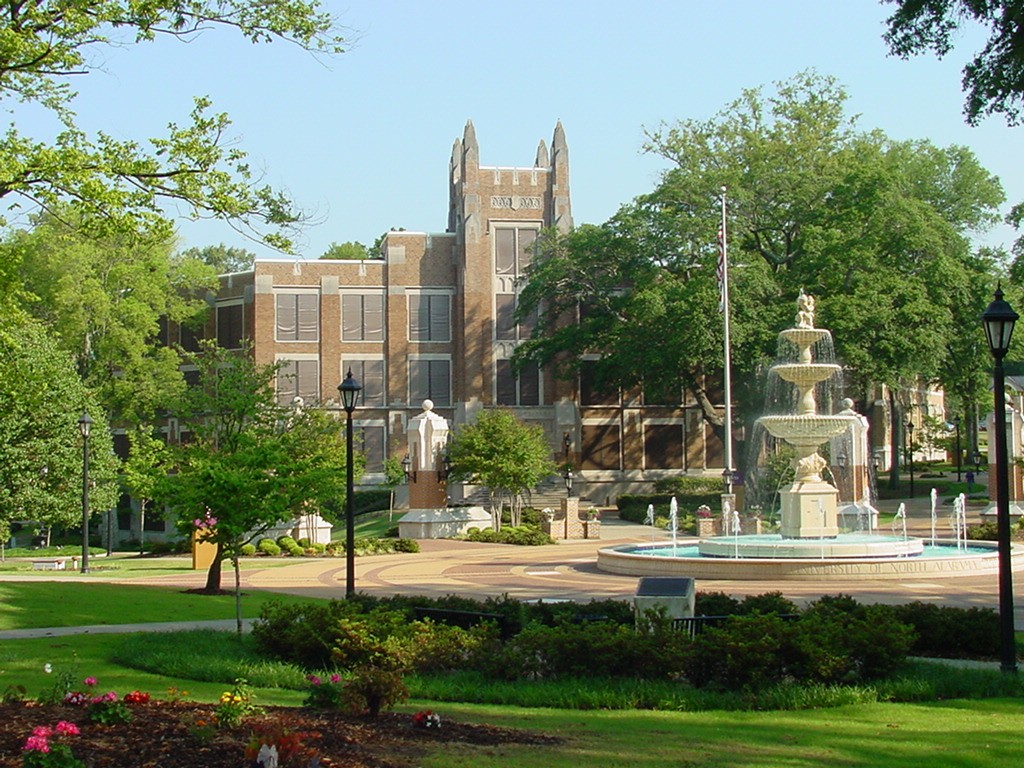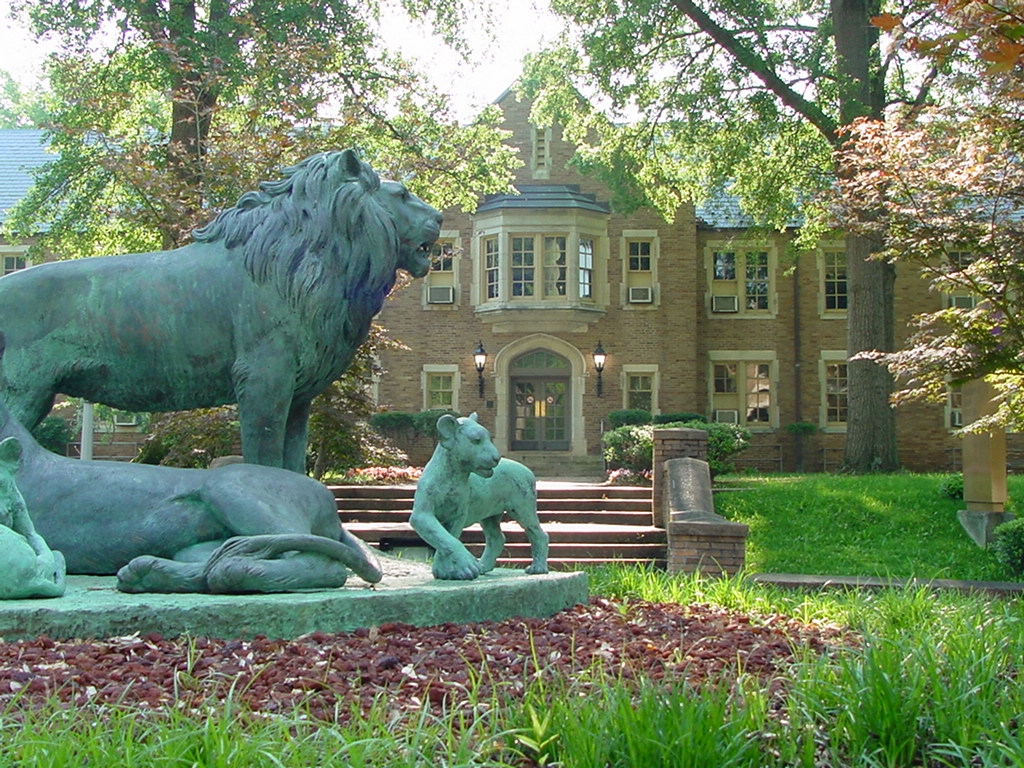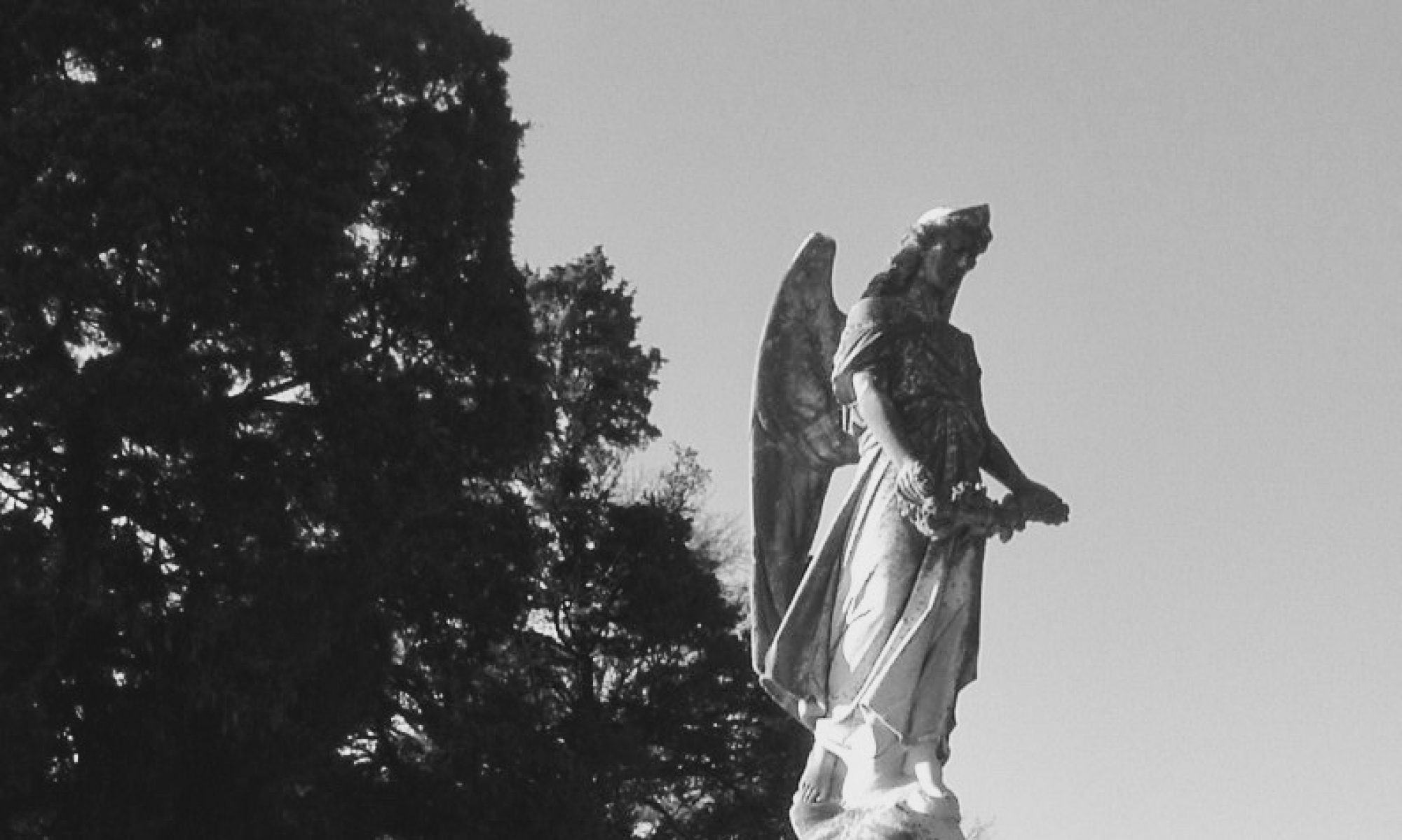On a cold day in January of 1830, a small Methodist school was carved out of the North Alabama wilderness and named LaGrange College. The college was built in the community of LaGrange, near what is now Leighton in Colbert County. With 70 male students and 3 professors, the college was fairly successful. Twenty-five years after opening, the Methodist conference decided to move the school to Florence, renaming the school Florence Wesleyan University. A large, Gothic structure, named Wesleyan Hall, was constructed for the school and it was here that Union General Sherman stayed as he and his forces passed through the city during the Civil War.

The school struggled during and following the war. In 1870, the Methodist conference offered the school to the state of Alabama. After the state’s acquisition, the college became a teachers’ college and has operated successfully under a series of different names until it took on the current name in 1974. Operating on a campus designed by the sons of landscape architect Frederick Law Olmstead, and within a mix of historic and modern structures, the university has over 7,000 students, over 350 faculty members, and a number of spirits.
Off Campus Bookstore
472 North Court Street
Occupying a corner of the intersection of North Court Street and East Irvine Avenue, the Off Campus Bookstore is a part of what could very well be named the most haunted intersection in Florence. Just next door to the bookstore is the Edward Asbury O’Neal House, the haunted home to two state governors. Across North Court is historic and haunted Coby Hall, then across East Irvine is the modern and haunted hulk of Norton Auditorium with antebellum Rogers Hall (also known as Courtview) next door. While Rogers Hall is purported to be haunted, there is little documentation.
In the presence of these grand buildings, the Off Campus Bookstore, located in an early 20th century bungalow, may seem out of place, but its story is perhaps the saddest and most terrifying. The story began with the young daughter of the family living here being bitten by her dog. The dog was foaming at the mouth, and when the little girl extended her hand, it bit her, infecting her with rabies. With no treatment options at that time, the child died painfully in one of the upstairs bedrooms.
Since the girl’s death, she has continually been seen both in and around the house, sometimes in the presence of her beloved pet. Debra Johnston recounts an evening once, during the time that this house served as the Kappa Sigma fraternity house, when some brothers in conversation were interrupted by the apparition of a small girl asking, “Have you seen my dog?” In the 1980s, while the house was being renovated for use as a bookstore, a gentleman in the house witnessed a floating pink mist accompanied by the sound of a child walking barefoot.
Store employees still see the little girl around the store and note that candy often turns up missing when the store is opened in the mornings. Passersby still see the little girl looking from the windows of the bookstore at night and sometimes report hearing a child inquiring about her dog.
Directly across the street from the bookstore stands graceful COBY HALL which served as a private residence until the early 1990s when a school benefactor bought the house and donated it to the university in memory of his wife. Originally named Courtland Mansion, the home was constructed in the 1830s, and it has had an interesting history. During the Civil War, the house was occupied by troops of both sides including Confederate General John Bell Hood. The home is now an events space for the university.

Many staff members and students working in the house have experienced paranormal activity. The apparition of a woman wearing a navy skirt and white blouse has been seen on the first floor of the house, though her identity hasn’t been established. Jessica Penot reports that the spirit of Margaret Patton Simpson, wife of John Simpson who built the home, is still in residence here and dislikes disorder and chaos within her former home.
Across East Irvine from Coby Hall sits modern NORTON AUDITORIUM. During construction of this auditorium in the 1960s, tradition holds that a worker was killed in a fall and subsequently remains in the building in spirit. Interestingly, this common feature in ghostlore can also be related to two other Southern college theatres: Price Theatre, LaGrange College, LaGrange, Georgia and Van Meter Hall, Western Kentucky University, Bowling Green, Kentucky.
While the exact identity of the spirit remains unknown, the spirit has been named “George” by those working in the auditorium. George has become notorious for causing odd sounds throughout the building and messing with the lights. Two young men spending the night in the building actually witnessed all the lights in the building turning on at once, though the main electrical breaker was switched off. Members of the staff of the campus newspaper, The Flor-Ala, were able to communicate with George via a Ouija board in 2011 (not something I can recommend for amateurs).
Behind the auditorium Oakview Circle branches off of North Pine Street. Along this street of gracious old Southern homes is the PHI GAMMA DELTA HOUSE (523 Oakview Circle) where the brothers of the Phi Upsilon Chapter reside along with a female ghost named Ella. According to legend, Ella fell down the stairs here and died. Her screams are sometimes heard here and the spirit acts out when brothers bring their girlfriends into the house.

Continuing down North Pine Street, the long, International Style LaGRANGE HALL stretches off to the right just after the bridge. This 1960s era residence hall has been the scene of some paranormal activity. A recent article from The Flor-Ala recounts the experiences of a student in this residence hall during the 2014-2015 school year. She reported a feeling of being watched in the bathroom and seeing stall doors open on their own.
Towards the east side of campus along North Wood Avenue is the oldest building on campus, WESLEYAN HALL, where the pathetic form of a young boy still wet from his fatal swim has been observed. At times, the young boy’s wet footprints have been seen on the floor, but questions still linger as to the youngster and how he downed. Tradition holds that the boy is Jeremiah, a young Union drummer boy, and the son of one of General Sherman’s officers. Sherman is traditionally thought to have occupied the building during the Civil War.
In some versions of the legend, young Jeremiah was kidnapped by locals and used as a pawn to prevent Sherman from burning the town. After Sherman threatened to do that very thing if the boy was not returned, the boy was returned unharmed. In other stories, the boy simply went for a swim in a nearby creek and drowned.

Wesleyan Hall is considered a magnificent example of Gothic Revival architecture and was constructed in 1855. During the Civil War, troops of both sides occupied the building. An investigation conducted by the staff of the Flor-Ala, the campus newspaper, in a number of haunted buildings on campus in 2011 turned up doors opening and closing by themselves here, and a computer turning itself on and off.
A product of President Franklin Roosevelt’s Works Progress Administration, WILLINGHAM HALL was constructed as a men’s dormitory in 1939. It has seen a variety of uses in the years since and currently houses offices for history, English and political science faculty. It was an English instructor who had a fearful experience here late one night a few years ago. He had returned to his office to retrieve a book when he heard a loud pounding that seemed to come from the basement. Looking in the basement, the instructor saw nothing and returned to his office. The pounding started up again accompanied by male voices. At that point the instructor calmly fled the building.

Willingham Hall sits on what was the site of the Locust Dell Academy which was operated by Nicholas Hentz. Local historian and ghost author Debra Glass noted that Hentz was known to play music very loudly into the night. Perhaps he is still responsible for the spectral racket that is heard here.
Towards the center of campus sits the massive GUILLOT UNIVERSITY CENTER. Built in 1986, this structure replaced O’Neal Hall which had originally stood on this site since 1913. The resident spirit of O’Neal Hall was Priscilla, who legend holds committed suicide by hanging herself in an elevator shaft. The reasons behind her pain have been lost to history, though her form was seen a number of times within the old building. In 1984 a student locking up the building after a fraternity meeting was drawn by the sounds of a woman sobbing. Venturing upstairs, the young man encountered the diaphanous form of a young woman weeping. He fled.

Author and local ghost expert Debra Johnston has recounted that while giving tours in front of the Guillot Center after hours the elevator doors were seen to open and close despite no one being inside the building. The front door of the building then opened by itself, though the building was locked for the night. She ventured that perhaps Priscilla had come out to hear her own ghost story.
Sources
- Delinski, Bernie. “UNA possesses lion’s share of ghost stories.” Times-Daily. 31 October 2015.
- “Haunting at UNA.” The Flor-Ala. 27 October 2011.
- Honeycutt, Lauren. “Ghost encounters on campus.” The Flor-Ala. 22 July 2016.
- Johnston, Debra. Skeletons in the Closet: True Ghost Stories of the Shoals Area. Debra Johnston, 2002.
- Johnston, Debra. Skeletons in the Closet: More True Ghost Stories of the Shoals Area. Debra Johnston, 2003.
- Lindley, Alex. “University of North Alabama (UNA).” Encyclopedia of Alabama. Accessed 22 July 2016.
- Penot, Jessica. Haunted North Alabama. Charleston, SC: History Press, 2010.
- Tew, Kaitlyn. “UNA alumna, faculty recount campus ghost stories.” The Flor-Ala. 31 Oct 2013.
- University of North Alabama. Wikipedia, the Free Encyclopedia. Accessed 22 July 2016.
- Willingham Hall. UNA. Acc. 30 Jun 2015.
